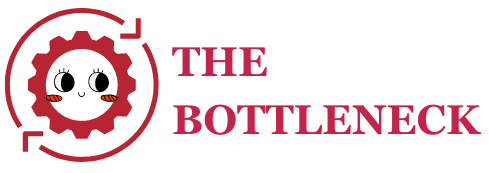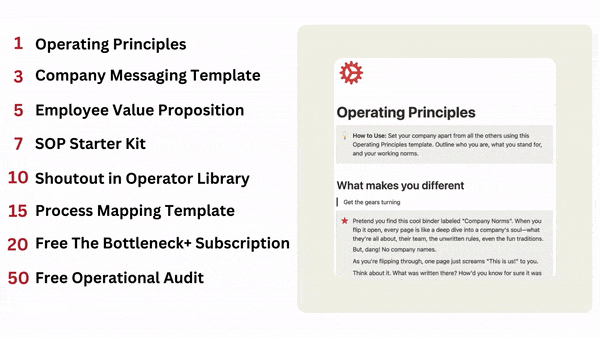
Read Time: 3.8 Minutes
Happy Sunday Operators ⚙️
Welcome to another edition of The Bottleneck+
Do you ever wonder what tactics the best companies use to scale their businesses?
Or ever need someone to bounce ideas off of who has done it before?
Or maybe you need how to guides on the nitty-gritty of operating?
With The Bottleneck+, you get access to all of this and more. Click the button below to learn how to begin scaling your business 10x faster.
While you upgrade your membership, let’s dig into this week’s case study.
How does Constellation Software manage 500+ companies without dealing with the day-to-day operations?

What is Constellation Software?
Constellation Software is a conglomerate that has acquired over 500+ vertical SaaS companies.
Their strategy is to be the best vertical SaaS acquirer in the industry.
Not sure what a vertical SaaS company is?
No worries, I got you.
Vertical SaaS companies are:
Focused on serving niche businesses (think software for waste management)
Have a high gross margin
Low churn by selling mission-critical software
Starting with $25 million dollars, Constellation has built a $49 billion cash flow machine.
They rely on a simple cycle to fuel acquisitions. Constellation uses the cash flow from their current companies to buy new companies. To ensure the model works, their portfolio companies must be managed perfectly.
So how does Constellation Software manage the day-to-day of such a large portfolio of companies?
Simple.
They don't.

Why should you care?
Giving up control will lead to higher returns
Mark Leonard, the founder of Constellation Software, firmly believes that autonomy produces better results and motivates employees.
One of the fundamental beliefs at CSI, is that autonomy motivates people, and bureaucracy does the opposite, so we try to do as many important monitoring tasks with as light a touch as possible.
Constellation's approach is all about delegating decisions further down the line.
They're not like those private equity firms they're up against. CSI believes that thinking about the long-term future allows them to have a different operating model than other firms.
Instead of buying companies to sell quickly for a profit, Constellation likes to keep their acquired companies forever.
Constellation can take their time managing those companies because they're not in a rush to make quick money.
They let the people who already work there keep leading after an acquisition.
Constellation only shares best practices and provides data on company-wide performance.
With an operating model focused on empowering employees, everyone benefits by:
Higher employee retention: Constellation is on track to create over 100 millionaire employees
Aligned interests across teams: Most of that wealth generated for employees is created through the stock
Defined career ladder: Constellation has pre-defined the career ladder to allow anyone to climb if that employee puts in the work

How do you do this?
Constellation has a head office with operating groups. The head office oversees six "Operating Groups" (OGs): Volaris, Harris, Jonas, Vela, Perseus, and Topicus.
Every OG operates like a small-scale version of Constellation. They mirror what CSI represented a decade ago.
Each OG functions as a parent entity with a unique set of software companies under its umbrella. These OGs are a blend of specialized services and products.
This strategy hands the reins of the Operating Groups over to the General Managers. These folks have the power to okay M&A deals up to a whopping $20 million, which is about 4 to 5 times the usual deal size.
In one of his Annual Letters, Mark Leonard, founder of Constellation Software, outlined his decentralized management style:
Head office provides the Operating Groups with capital allocation assistance and decisions, and tries to disseminate some best practices, a few clear rules, a bit of coaching, and coughs up the occasional partly trained employee for the Operating Groups. Compliance, investor relations, and handling the finance function round out the head office duties. Whenever we feel stretched at head office, we download more of our work to the Operating Groups. This delegation to the point of abdication philosophy (first discussed in the 2010 Letter to Shareholders) seems to have worked so far.
The goal is to ensure that their central office keeps a light touch and doesn't bloat in size.
This relaxed operating model is an unorthodox approach, even among many conglomerates. Conglomerates tend to mash up similar companies together for "synergy" reasons.
The main role of the headquarters is to lay down some key rules and offer guidance.
It's kind of wild how effective Constellation's hands-off policy is.
They've got this knack for achieving more by intervening less - a pretty rare and impressive strategy.

Spread The Word
Share The Bottleneck with friends to get a few freebies. Maybe you’ll make some new friends along the way 😆
We’ll give you free stuff and more friends if you share a link. Only one link.

{{rp_personalized_text}}


